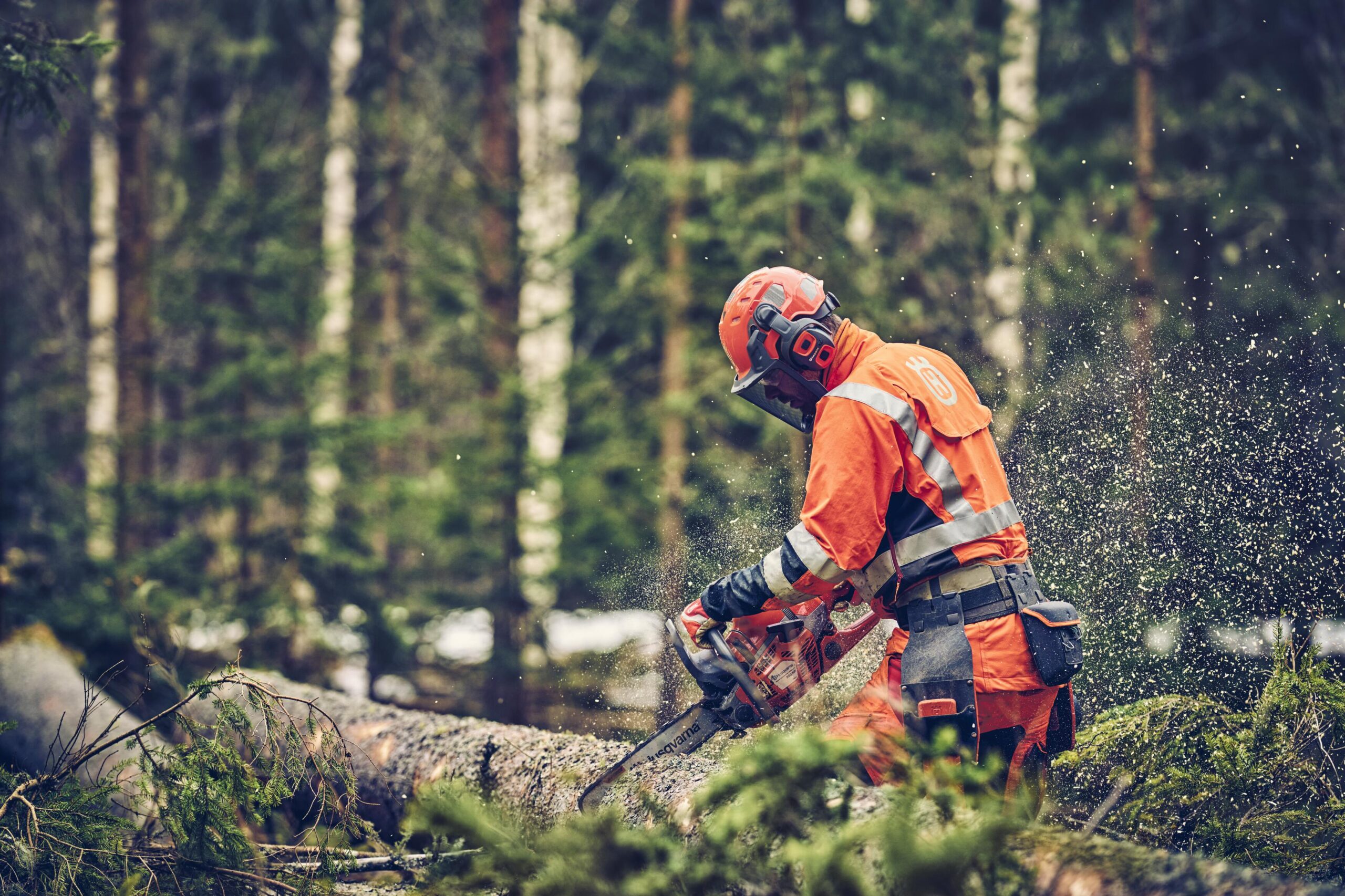Chainsaws, vital tools in numerous industries and even domestic use, offer significant applications but also inherent risks if utilised incorrectly. To ensure the safety of individuals using chainsaws, it is crucial to adhere to proper safety requirements and guidelines. Whether you are an experienced professional or a novice, understanding and following these guidelines can assist in reducing the risk of accidents and injuries.
Charles Henderson, Business Development Manager at Husqvarna South Africa, and a seasoned Tree Professional says, “Chainsaw safety is of paramount importance. It’s not just about the right equipment but also knowing how to use it correctly.”
He shares the following tips to ensure that users can work confidently and securely:
Before You Start:
- Communication is Key: If you are working alone, always inform someone of your whereabouts. Share your location and work plans with a trusted individual.
- Plan Your Exit: Park your vehicle in a way that allows for a quick and easy exit in case of an emergency.
- Stay Connected: Always carry a mobile phone and maintain regular contact.
Chainsaw Safety Personal Protective Equipment:
Proper clothing and equipment are fundamental prerequisites for chainsaw users. According to Henderson, most chainsaws come equipped with safety features. This includes chain brakes which allow the user to stop the chain quickly should it not automatically engage through inertia.
Lacerations, which occur when individuals come into contact with the chainsaw chain, represent the most frequent type of chainsaw-related injuries. Surprisingly, however, even though nearly half of all chainsaw-related injuries affect the legs, the importance of chainsaw pants is frequently underestimated. To mitigate these risks, wearing the appropriate protective gear is essential. Ensure you have the following:
- Chainsaw Pants: Engineered to stop a chain immediately when encountering their sprocket clogging material. For example, Husqvarna now offers locally made chainsaw pants which conform to the latest international standards, namely ISO 11393.
- Forestry Jackets: Vital for safeguarding your upper body.
- Helmet with Hearing Protection and Safety Visor: Essential for protecting your head against falling debris, shielding your eyes and safeguarding your hearing from loud noise.
- Boots with Toe Protection: Designed with reinforced material in the toe area to protect your feet.
- Gloves: Protect your hands from cuts, vibrations, and debris.
Safe Chainsaw Handling:
- Grip: Maintain a secure grip on both handles of the chainsaw. Ensure that your thumbs and fingers are wrapped entirely around the handles. Position your left thumb under the front handle to reduce the impact of a potential kickback.
- Close Contact: Hold the chainsaw close to your body to improve balance and reduce the sensation of its weight.
- Balance: Stand with your feet apart for better stability, positioning your left foot slightly in front of your right.
- Bend Your Knees: Prevent back strain by bending your knees rather than arching your spine when working in low positions.
- Moving/Transport: Ensure the chainsaw’s chain remains stationary as you transition to a new location by activating the chain brake or switching off the engine during multiple moves or transportation.
- Safety Distance: Maintain a distance of 3 – 5 meters from others while working with a chainsaw. When felling trees, it is important to sustain a greater distance of two tree lengths.
- Beware of Kickback: Kickback, a sudden and forceful reaction of the chainsaw, primarily occurs in the upper quadrant of the guide bar. Use a chainsaw equipped with a functioning chain brake to minimise kickback risks.
- Maintenance: It is essential to ensure that regular maintenance of the chain brake is performed in accordance with the service schedule in the operator’s manual.
“Safety must always come first,” Henderson emphasises. It is not just about the right equipment but also knowing how to use it properly. Ensuring you wear the appropriate protective gear, mastering correct chainsaw handling techniques, and maintaining responsible work practices are non-negotiable aspects of chainsaw operation.”
To learn more about Husqvarna’s newly introduced, locally-made chainsaw pants or any other protective personal equipment, please visit the following: https://www.husqvarna.com/za/personal-protective-equipment/
Source: Husqvarna South Africa









